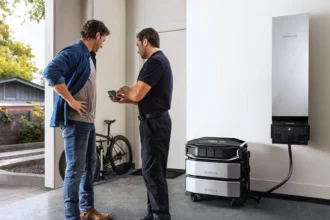The global battery market is growing at a rapid pace, with estimates projecting a sector value of $400 billion by 2030. However, European entrepreneurs often feel excluded as they watch Chinese giants like CATL make headlines with record-breaking IPOs, while homegrown champions like Northvolt file for bankruptcy, revealing the harsh reality of competing against entrenched Asian suppliers.
Still, Europe will never fully achieve energy independence in green energy and will be keen to work with Asia. But the continent is in great need of on-shoring supply, including green power and critical manufacturing. European green battery startups do have some real advantages, too: proximity to end-user markets, an intimate knowledge of what is required on the regulatory front, and a nimbleness when it comes to tackling niche applications.
The issue isn’t whether you can create cheaper batteries than China — it’s whether you can develop better solutions for what are particular European needs. My company, Alterity, carved out a profitable niche in batteries to drive forklifts, lifting platforms, and mobile robots that work in industrial centers. Other start-ups can carve out a space, too. Here are our tips for building a green battery business you can scale.
Target specialized niches, not scale competition
Choose high-value applications where innovation and environmental compliance are most important, not unit price. They could be found in aerospace, defense, marine, offshore wind, and medtech. But they are all heavy battery users and have strict manufacturing and regulatory stipulations that play into the hands of European manufacturers.
Another market where European companies might gain an edge is data centers. With more and more pressure on hyperscale operators to deliver on their carbon-neutral promises, they are looking for suppliers that can present 15-20% CO2 reduction possibilities during manufacturing, as well as other sustainability gains.
Employ EU regulation as a differentiator
Turn the necessity to comply with these standards into a competitive moat by getting on board with the Critical Raw Materials Act, EU Battery Regulation 2023/1542, and Sustainability Reporting rules that rival mass Asian producers in Asia are wallowing around in like so many captured bandicoots. Embedding these capabilities into the heart of your operations when you start enables a sustainable level of differentiation, one that will become more and more valuable as regulation increases.
Gain experience in lifecycle carbon footprinting, sustainable material sourcing documentation, and end-of-life recycling methodologies. What begins as adherence becomes a competitive advantage when large companies are looking for suppliers who can negotiate the smorgasbord of European regulations and show some measurable environmental impact.
Tap into the EU circular economy model.
European customers are paying more attention to suppliers’ overall environmental impact and less to cost at the beginning of a deal. This changing landscape opens the door for manufacturers to quantify material recovery rates and lithium waste reduction through, among other advanced recycling technologies and closed-loop systems. Those companies that can offer better material recovery rates, coupled with quantifiable environmental benefits, will be positioned to create sustainable competitive advantage in the face of increasing raw material costs on a worldwide basis.
Boost European innovation and industry ties.
Europe provides world-class industrial clusters that can’t easily be found by Asian rivals. Participate in collaborative projects, work together with local research organizations, join EU Horizon Europe initiatives, and make use of local development funds tailored to specifically support strategic tech innovation.
Think about the benefits of being in established industrial ecosystems, where you have access to specialist talent, testing facilities, and potential customers all within the same region. For my company, support from the Government of Biscay in northern Spain was what we needed to make early progress and to plug into the region’s wider green tech cluster. Furthermore, our participation in PERTE (Strategic Project for Economic Recovery and Transformation) and other associated projects has helped us in the extension of technological limits from an environmental policy point of view.
Rethink total lifecycle value and not just initial costs.
While Asian manufacturers can work on unit production costs, European suppliers can play in the field of longevity, recyclability, and standards conformance. Create proprietary battery management systems with advanced thermal management and optimization technology to drive better performance over many use cycles. Many businesses in need of batteries value avoiding downtime more than they do saving money on the initial purchase. For industrial procurement, a battery that is 30% more expensive in the initial purchase but provides 50% longer runtime at known maintenance intervals equals an easy decision.
The path forward
Success requires discipline. Don’t try to chase big commodity markets, where you’ll end up losing on price, no matter what. No, instead, do whatever it takes to laser in on the opportunities where you’re European and regulated and able to offer a differentiator (purposely not saying “point of differentiation”) that really adds value for which clients are willing to pay.
The idea isn’t to oust Asian suppliers entirely, but to create much more resilient companies that can play alongside the giants of Asia rather than compete with them head-on on their own terms.
Domestic demand should be covered to a large extent by European production, probably at least 50–60% in 2030. Market estimates indicate that by 2030, leveraging technological differentiation, as well as regulatory benefits, European companies have the potential to gain a market share of between 25% and 30% in the segment of specialized industrial batteries. By playing to our strengths, we will build robust companies from which Asian providers are partners. Together we can deliver the best green energy storage facility for Europe.”













